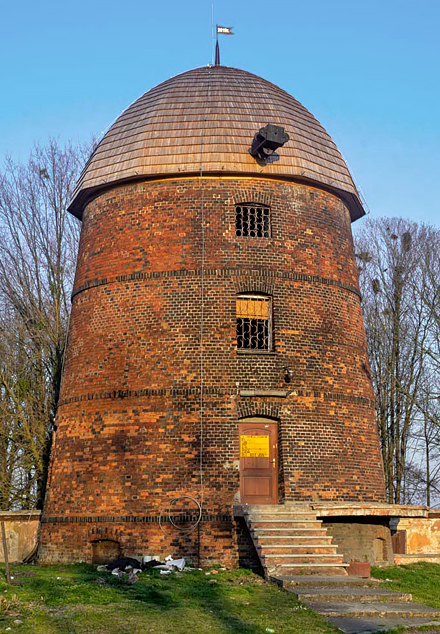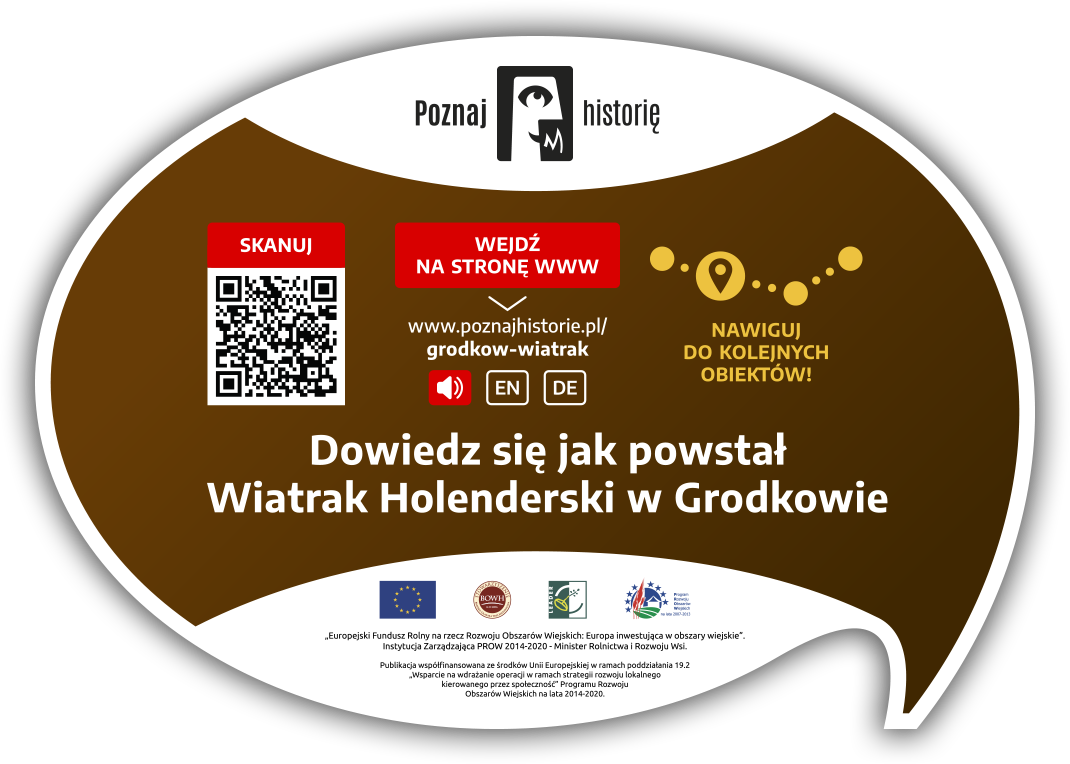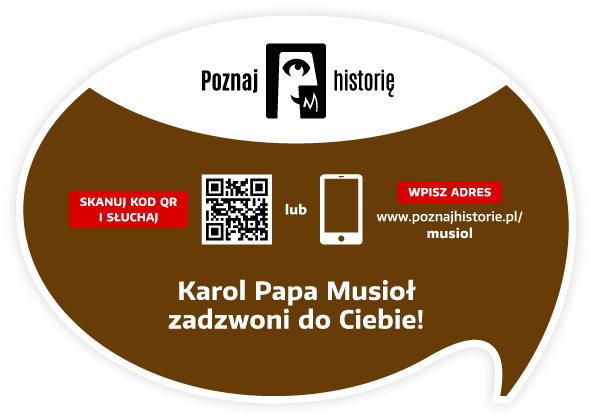Został on wzniesiony w XIX wieku, jednak nie znamy imienia młynarza, który z niego korzystał. W przeszłości znajdował się w sąsiedztwie zlikwidowanej w latach 70. XX wieku cegielni.
„Holendry” stały się popularne w całej europie już w XVI wieku. Do Polski zawitały później, bo w wieku XVIII. Szczególnie sporo powstało ich w Polsce zachodniej. W pozostałej części kraju nigdy nie udało im się wyprzeć „Koźlaków”, czyli wiatraków prymitywniejszych, pochodzących jeszcze ze średniowiecza. W XVIII wieku holendry zaczęły pojawiać się także na Śląsku, w którego krajobraz wpisały się trwale do dziś. Niestety w zdecydowanej większości - a w przypadku terenów okolic Brzegu i Oławy wszystkie - są one w stanie ruiny.
Ten grodkowski jest wyjątkiem. Należy do nielicznych tego typu zachowanych przykładów budownictwa przemysłowego na Śląsku Opolskim. Wiatrak swoją pierwotną funkcję pełnił aż do 1939 roku. W latach 60. ubiegłego wieku zaadaptowano go do celów gastronomicznych. Mieściła się tutaj popularna klubo-kawiarnia. Z tego właśnie okresu pochodzi dobudówka mieszcząca pomieszczenia magazynowe. Ostatni remont przeprowadzono w latach 80-tych.
W wiatraku zachowały się elementy historycznego wyposażenia: wał skrzydłowy, koło paleczne o konstrukcji proministo-szprychowej oraz koło trybowe. Pierwotnie posiadał skrzydła zapierzane z jednej strony płachtami, z drugiej – metalowymi żaluzjami.










Visit Social media:
Share Social media: